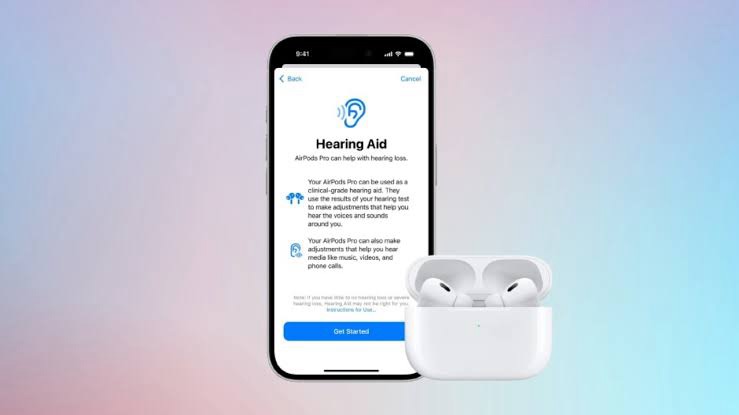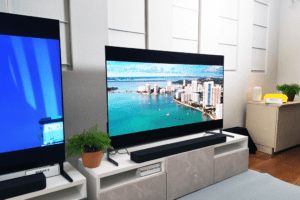Next week’s iOS 18 update turns popular earbuds into FDA-authorized hearing devices, potentially disrupting the $10 billion hearing aid industry
In a groundbreaking development that could revolutionize hearing health accessibility, Apple is set to transform millions of AirPods Pro 2 into clinical-grade hearing aids through a simple software update. This innovative approach, launching next week in the US and Canada, represents a significant disruption in the hearing aid industry by turning a $250 consumer device into a sophisticated hearing assistance tool.
Breaking Down Barriers to Hearing Health
With an estimated 44.1 million American adults experiencing some degree of hearing loss, and more than half of those affected never trying a hearing aid, Apple’s solution arrives at a crucial moment. The primary barriers to adoption – cost, stigma, and accessibility – could be significantly reduced by leveraging a device that millions already own and use daily.
This isn’t just about adding another feature to AirPods,” says Dr. Justin Golub from Columbia University’s Otolaryngology Department. “It’s about fundamentally changing how we approach hearing health screening and treatment. While it’s not a complete replacement for traditional hearing aids, it could serve as an important entry point for many users.”
The Technology Behind the Transform
The update introduces a sophisticated hearing test system that converts the popular earbuds into FDA-authorized hearing devices. The process is remarkably straightforward:
- Users take a 10-minute hearing test in a quiet environment
- The AirPods measure hearing thresholds across different frequencies
- Results are displayed as an audiogram, showing detailed hearing profiles
- The software automatically adjusts audio output based on individual hearing patterns
The system is sensitive enough to pause testing when it detects even minimal background noise, ensuring accurate results. Users receive detailed measurements, including specific decibel loss readings for each ear – information that can be shared with healthcare providers or family members.
Professional Validation and Accuracy
Early testing has shown promising results regarding accuracy. When compared to professional audiogram tests conducted in sound-proof rooms, the AirPods Pro 2 testing system has demonstrated remarkable consistency. The software can even import professional audiogram results, allowing users to apply clinical test results to their AirPods’ hearing aid settings.
Beyond Basic Hearing Assistance
The update includes several sophisticated features:
Conversation Boost
A standout feature called Conversation Boost specifically amplifies voices from people speaking 7-10 feet away, making it easier to follow conversations in noisy environments. This technology uses advanced audio processing to isolate and enhance human speech while managing background noise.
Hearing Protection
The system includes enhanced hearing protection features that automatically adjust audio levels to prevent damage from sustained loud sounds up to 110 decibels. Unlike traditional earplugs that simply muffle sound, this technology maintains audio clarity while reducing potentially harmful volume levels.
Customizable Settings
Users can fine-tune their experience through detailed controls for:
- Environmental sound amplification
- Media playback volume
- Balance between ears
- Frequency-specific adjustments
Cost Implications and Market Impact
At $250 retail (often available for $200), the AirPods Pro 2 represents a significant cost reduction compared to traditional hearing aids, which can range from $2,000 to $7,000 for prescription models. Even over-the-counter alternatives like Jabra’s Enhance line cost between $1,000 and $1,700.
However, battery life remains a limitation. With only 6 hours of use per charge, the AirPods Pro 2 can’t fully replace traditional hearing aids that offer 24-hour battery life. This positions them as more of a supplementary solution or entry-level device for those beginning to explore hearing assistance.

Social and Healthcare Implications
The integration of hearing health features into a mainstream consumer device could help reduce the stigma associated with hearing aids. Having a hearing test could become as common as checking your vision,” notes Sarah Martinez, a healthcare technology analyst. “When the testing device is something you already own and use daily, it removes many psychological barriers to screening.”
Professional Perspectives
Healthcare professionals see potential benefits and limitations. Dr. Golub emphasizes that while this technology makes hearing assistance more accessible, it shouldn’t be seen as a complete replacement for professional care: “If you need a hearing aid, get a real hearing aid. However, this could be an excellent way to identify hearing issues early and help people become comfortable with the idea of hearing assistance.”
Real-World Testing and User Experience
Early users report positive experiences, particularly with the Conversation Boost feature in challenging environments like restaurants and busy offices. Nancy Brown, a 77-year-old current hearing aid user, tested the system and noted that while she couldn’t rely on it as her primary hearing aid due to battery limitations, she was impressed by its music playback quality – an area where her traditional hearing aids struggle.
Looking Forward
This development signals a significant shift in how we approach hearing health. By integrating clinical-grade hearing assistance into a popular consumer device, Apple has created a potential pathway for earlier intervention in hearing health issues. The combination of accessibility, affordability, and reduced stigma could lead to more people addressing hearing concerns before they become severe.
Availability and Implementation
The feature will be available through an iOS 18 software update next week for users in the US and Canada. The update includes:
- Hearing test capability
- FDA-authorized hearing aid functionality
- Enhanced hearing protection features
- Conversation boost technology
- Professional audiogram import options
While this development represents a significant step forward in hearing health accessibility, it’s important to note that it’s not a complete replacement for professional hearing care. Instead, it offers a valuable entry point and supplementary tool in the broader landscape of hearing health solutions.
















Add Comment